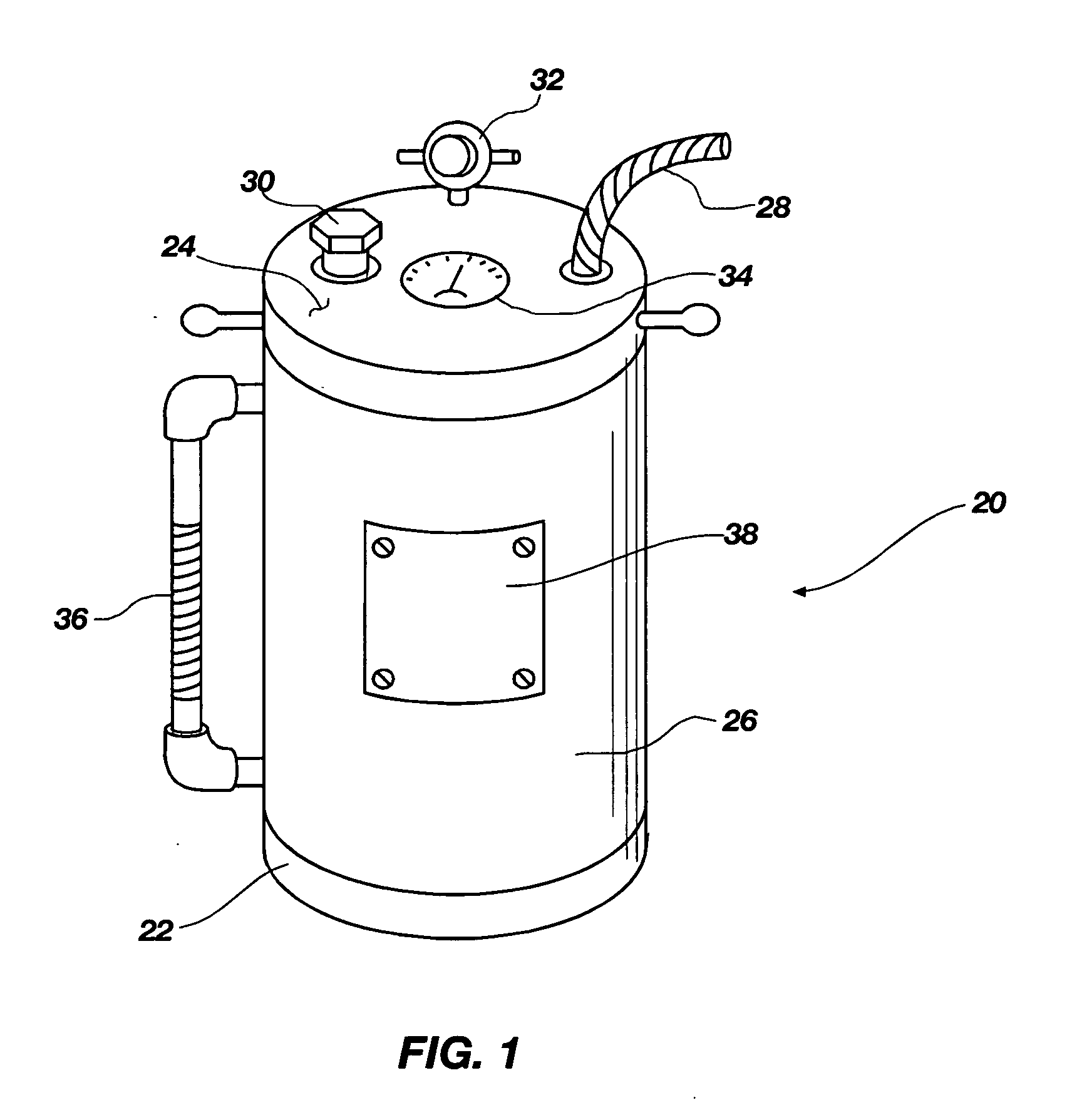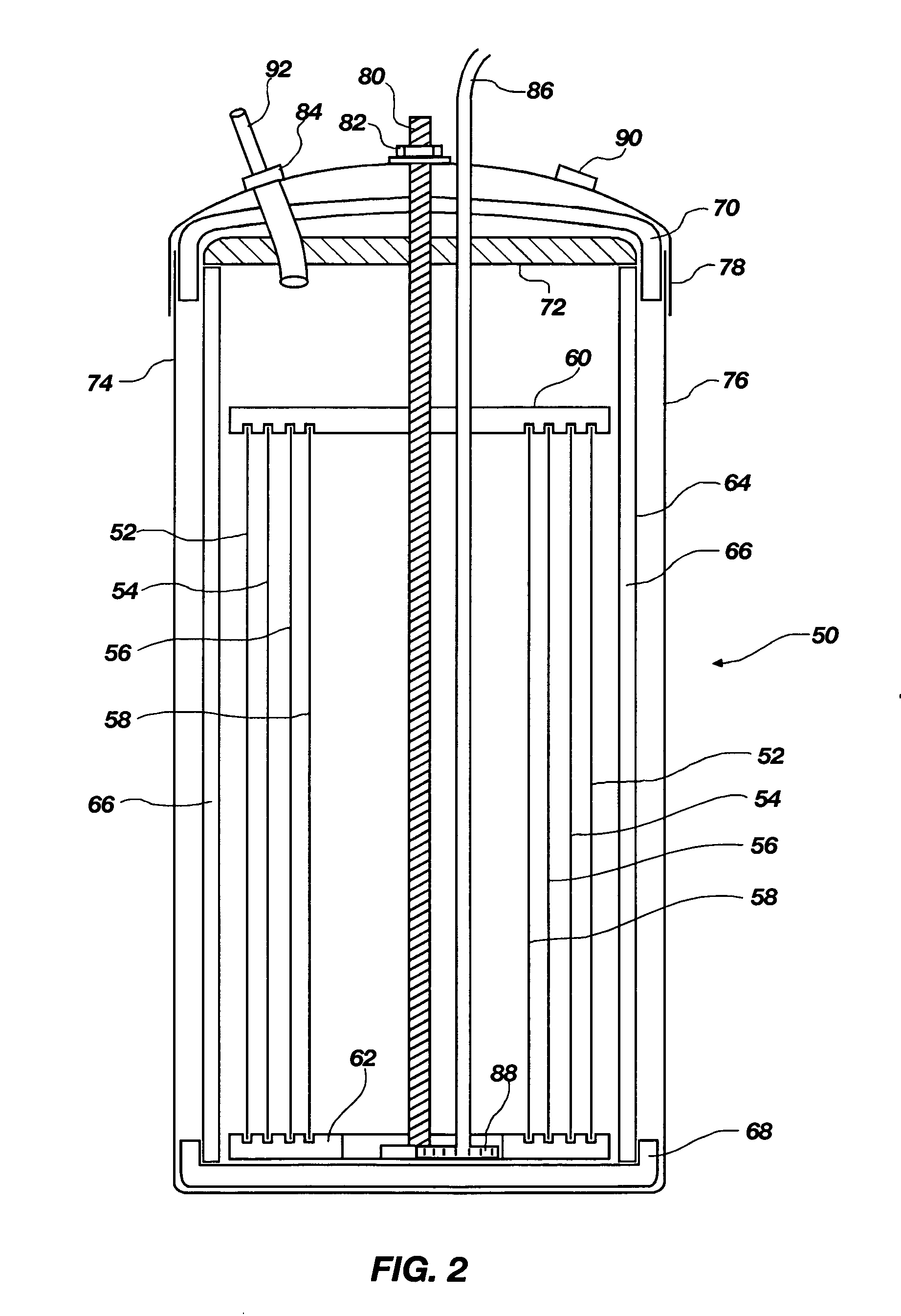Fuel system for internal combustion engine
a fuel system and internal combustion engine technology, applied in the direction of electrolysis components, electrolysis processes, cells, etc., can solve the problems of using hydrogen as a fuel supplement, presenting the same difficulties as its use, and ever present danger of accidental ignition and explosion, so as to reduce or eliminate the buildup of sludge and/or particulates from unwanted side reactions, reduce or eliminate contaminants, and high flow rate
- Summary
- Abstract
- Description
- Claims
- Application Information
AI Technical Summary
Benefits of technology
Problems solved by technology
Method used
Image
Examples
example 1
[0083] A 1998 Chevrolet ½-ton pickup truck with a 5.7-liter gasoline engine and automatic transmission was tested prior to installation of a fuel system according to the present invention and was determined to produce a maximum of 169 horsepower and 293 ft.-lbs. of torque. An emissions test was performed on this vehicle, wherein a passing score of 33 parts per million (ppm) of hydrocarbons was obtained at 2500 revolutions per minute (rpm). The two catalytic converters were removed from the vehicle, resulting in the “check engine” light on the dashboard coming on, and then the emissions test was repeated, resulting in a failing score of 279 ppm of hydrocarbons.
[0084] Next, an electrolysis fuel system according to the present invention was installed on the vehicle and the emissions and performance tests were repeated. The “check engine” light on the dashboard did not come back on after installation of the electrolysis fuel system. The hydrocarbons level was 32 ppm, which was a passin...
example 2
[0085] A 2003 Chevrolet Duramax diesel pickup truck was tested prior to installation of an electrolysis fuel system according to the present invention. The horsepower rating was 264.0 and the torque registered 450.4 ft-lbs. Upon emissions testing, this vehicle produced a passing score of 9.2% particulates (opacity). After installation of an electrolysis fuel system according to the present invention, the horsepower rating increased to 332.4, an increase of 67.5 horsepower; the torque rating increased to 563.3 ft-lbs, an increase of 112.9 ft-lbs; and the emissions test showed 0% particulates.
example 3
[0086] A 2004 Ford F-250 Powerstroke with a diesel engine was tested prior to installation of an electrolysis fuel system according to the present invention. Without a performance chip, the tests showed 272.6 horsepower and 412.4 ft-lbs of torque. Then, an Edge performance chip was installed and the tests were repeated, resulting in 271.0 horsepower and 416.7 ft-lbs of torque. An electrolysis fuel system according to the present invention was installed and the performance chip was removed, and the tests were again repeated, resulting in 275.8 horsepower and 434.2 ft-lbs of torque. These results amounted to increases over the stock results of 3.2 horsepower and 21.8 ft-lbs of torque. Finally, the performance chip was reinstalled, and the tests showed results of 279.7 horsepower and 432.7 ft-lbs of torque. These results amounted to increases over the stock results of 7.1 horsepower and 20.3 ft-lbs of torque.
PUM
| Property | Measurement | Unit |
|---|---|---|
| temperature | aaaaa | aaaaa |
| temperature | aaaaa | aaaaa |
| pH | aaaaa | aaaaa |
Abstract
Description
Claims
Application Information
 Login to View More
Login to View More - R&D
- Intellectual Property
- Life Sciences
- Materials
- Tech Scout
- Unparalleled Data Quality
- Higher Quality Content
- 60% Fewer Hallucinations
Browse by: Latest US Patents, China's latest patents, Technical Efficacy Thesaurus, Application Domain, Technology Topic, Popular Technical Reports.
© 2025 PatSnap. All rights reserved.Legal|Privacy policy|Modern Slavery Act Transparency Statement|Sitemap|About US| Contact US: help@patsnap.com



